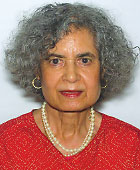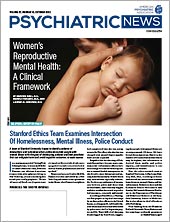It is hard to move on from a career in a historic and hallowed place where you have worked for almost 20 years.
I didn’t want to leave St. Elizabeths Hospital in Washington, D.C. The administrator at the time honored my passionate sentiments to remain—until he was overruled, of course. In preparation for my inevitable “eviction,” I spent much time roaming among the cypress and oaks, cutting red holly berries at Christmas, studying the labels nailed on ancient trees of the West Campus, relaxing at the picturesque point overlooking the Washington Monument and the Potomac, and watching the helicopters from Bolling Air Force Base.
In late 2001, I was moved into the heart of Washington, D.C., near Union Station. My transfer followed the long-planned discharge of our patients into community residential facilities. I managed my separation by exploring any authorized occasion to visit the hallowed grounds: There were too few.
My memories and nostalgia persisted. Thereafter, as if through a kaleidoscope, and with tenacity, zeal, sadness, and patience, I watched the campus undergo a metamorphosis as bulldozers and forklifts dug up the earth and razed buildings. I studied the promise of modernity through the black-iron railings along eight blocks of 2700 Martin Luther King Jr. Avenue. From that same stretch of road and over the high western stone-and-brick wall, I scanned the panorama of pagoda-like red tiled-roofs, the clocktower, and lofty turrets of architectural grandeur.
When the main gatehouse disappeared, so did the security guard and demand for identification. I was emboldened and walked onto the East Campus. An endorphin rush of pure joy surged at the encounter with the past. I claimed the acres again in silence, feeling victorious.
My pleasure continued at my sweet fortune to walk on Cypress and Oak again, past old and sublime buildings with rectangles of windows, rotten shingles, and some roof tiles still lined up in perfect symmetry. No one confiscated my camera, but I stayed vigilant for workers in hard hats and trucks. And suddenly I jumped for joy. I spied a plaque behind a delicate curtain of fresh greenery: A.P. Noyes Division Bldg. 7. The plaque was surrounded by five-leafed creepers spreading across the building’s imposing green door. Broken red tiles were scattered on the steps and the porch, fallen from the roof above. The Virginia creeper climbed upward.
I recalled this building primarily by its literary connection to the popular Noyes psychiatry textbook. Arthur Percy Noyes, M.D., worked on the medical staff in St. Elizabeths possibly from 1920 to 1929 under the enterprising William P. White as medical superintendent. Noyes’ A Textbook of Psychiatry was first published in 1936, primarily for graduate nurses but also for medical students. Noyes served as APA president for the 1954-1955 term.
These scattered red buildings reflected St. Elizabeths’ stubborn resilience and provided a time capsule of its history. Disparate fragments of its past came back to me as I left the grounds—Dorothea Dix, the carriage entrance at the Center Building, clay bricks made from the soil, the creamery, segregated wards, wounded Civil War soldiers, Blackburn Lab, the lodging of poet Ezra Pound: a complex history. ■

